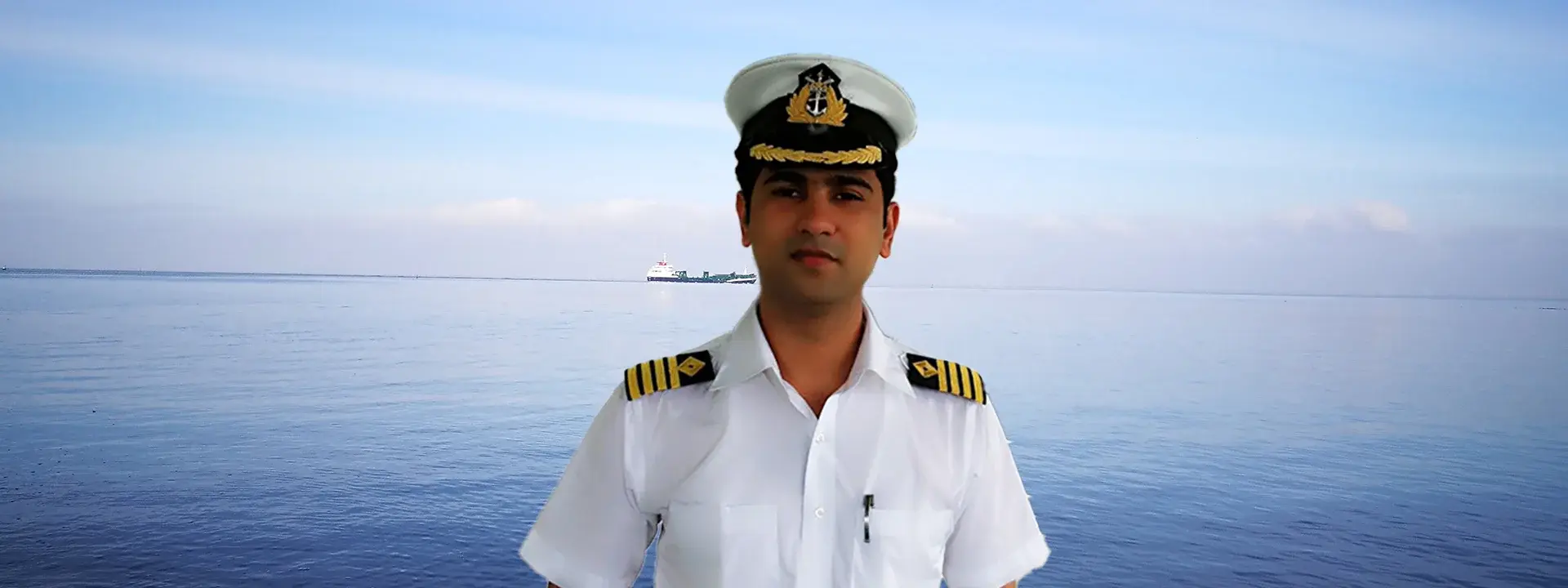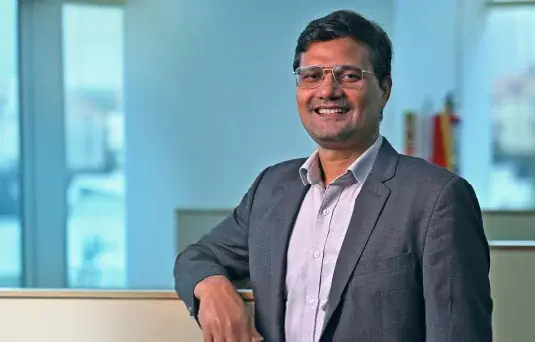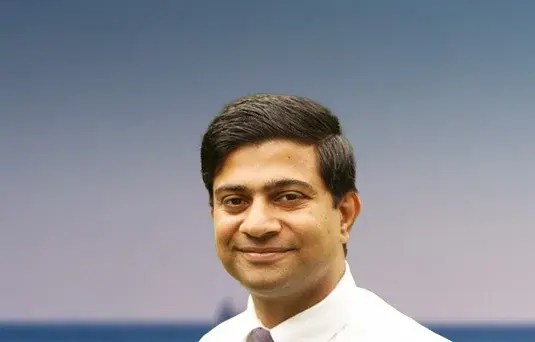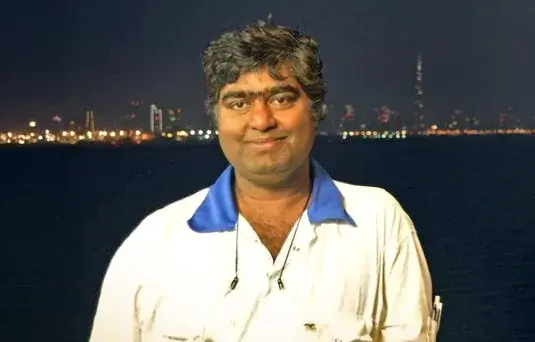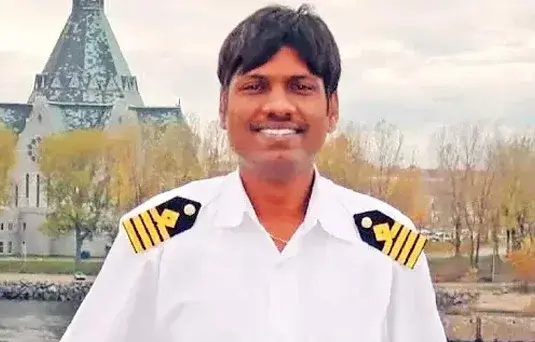Seafarer Stories
Sea to Strategy: The Journey of Capt. Shantanu Singh
Captain Shantanu Singh
From a disciplined childhood to 15 years at sea and now driving business development at MOL, Capt. Shantanu’s journey reflects resilience, leadership, and the ability to carry lessons from the ocean into every new horizon.

01
Let us begin at the beginning. What was your childhood like and what shaped you before the sea entered your life.
Discipline became second nature early in life. Growing up in a Sainik School meant living a structured, military-style routine where responsibility and order were part of everyday life. I was often entrusted with leadership roles, class monitor, house captain, school captain; which I embraced wholeheartedly. While I was academically focused, I also enjoyed the accountability that came with leading others. My path seemed set towards NDA. In fact, I had cleared the NDA written exam.

02
So how did a boy preparing NDA and IIT end up in the merchant navy?
Pure chance, or maybe destiny. While I was preparing for IIT, I came across a newspaper notice for the Shipping Corporation of India’s all India exam for TNOC (Trainee Nautical Officer Cadet). I had no background in shipping and no idea what that life would look like. But I sat for it, cleared it, and my teachers encouraged me to give it a try. That decision took me to sea, and it became the defining journey of my life.

03
What do you remember most from your earliest voyages?
My first navigation watch from 4 to 8 a.m. I still remember standing on the bridge wing, the morning air cold and clean, the horizon stretching forever, the sun rising over the sea. Those mornings taught me humility. You realize how small you are compared to the ocean, and how large your responsibility is.

04
You spent 15 years at sea. What were the moments that defined you as a leader?
As a ship’s Captain, we bear full responsibility for the safety of the crew, the vessel, and the cargo. Navigating through storms, emergencies, and complex operational challenges demands calmness, quick thinking, and effective decision-making under pressure. These experiences sharpen the ability to assess risks and act decisively.
Two moments stand out in my sailing career. The first one was an engine and power failure in the Taiwan Strait during a severe storm. Losing propulsion in confined waters exposed us to multiple risks—drifting, grounding, collision, and even structural damage. To make matters worse, we couldn’t even drop anchor. Those few hours were intense and critical. As Captain, you must make the right calls, even when you yourself are under immense pressure. It’s in such moments that leadership, resilience, and clarity truly matter.
The second was during cargo operations, when we were told a crew member had collapsed in his cabin. When I reached him, his pulse was faint, his breath almost gone. In that moment there was no manual, no protocol only instinct. I gave him mouth-to-mouth resuscitation until, finally, he came back. Minutes felt like hours. That night I learned leadership is not about your rank or title. It is about being willing to step in when a life hangs by a thread.

05
Life at sea is also full of 3 a.m. calls. How did you cope with those?
On tankers, the Chief Officer is the one who is responsible for cargo operations. He is the first to be called in the middle of the night because nothing can be left unchecked, cargo, ballast, safety. I lived that role with full ownership. Many nights I was woken with problems, sometimes small, sometimes terrifying like hearing the words, “the ship is listing.”
When I rose to Master, technically I could have stepped back and let my Chief handle those calls. That is how hierarchy works. However, I kept myself involved; I never used to switch off my walkie-talkie during cargo operations. I kept it on because I wanted to know, to respond, to share that responsibility. For me, leadership meant being present, not distant. In those moments calm was my strongest tool. My philosophy has always been to give 100% from the very first step of any operation or project. Laying a strong foundation early significantly reduces the likelihood of major challenges later on. Unfortunately, I’ve often observed that when people take things lightly in the initial stages, they end up facing serious issues down the line.

06
Outside the duty what made life at sea human?
Magazines, Movies and music were my escape. We regularly bought magazines, carried hard drives full of films and would watch them or listen to music after duty hours. Even simple conversations with colleagues about non-work topics brought a sense of normalcy.
I’ve always been a teetotaler, so for me, movies, music, and food were my indulgences. Food mattered a lot, Sunday biryani was the highlight of the week. And then there was shore leave: smart casual clothes, a good meal, and a phone call home. I still remember Queensland, Australia and various other locations; those few hours ashore reminded you that life existed beyond the vessel.

07
And today, on land, how has your journey evolved?
The transition has been truly transformative. For 15 years, my world revolved around ships, cargo, and the sea. Today, I stand on the other shore, driving business development that often extends far beyond shipping. My focus now spans development of new businesses as per company’s Blue Action 2035 which involves mergers and acquisitions, investments, and even startups / VCs investment as part of MOL Group’s CVC MOL PLUS.
It may seem like an unusual shift for a seafarer, but the skills translate seamlessly. The sea taught me decisiveness, discipline, and resilience; business has added perspective, strategic thinking, and the ability to build for the long term. At MOL, I bring both worlds together—the instinct of a mariner and the vision of an investor.
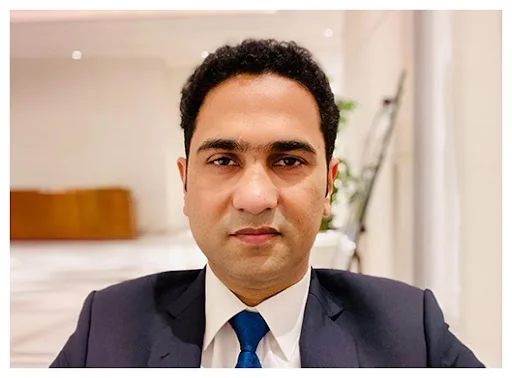
08
What makes MOL the right place for you today?
MOL gives me the best of both worlds. It is rooted in shipping, which is my foundation, but it is also forward-looking, expanding into logistics, New energy, technology, even startups. That breadth allows me to use what I learned at sea - discipline, resilience, decisiveness while also applying the strategic lens I’ve built being in business development. At MOL I am not just part of operations or part of strategy, I am part of both. It feels like the right bridge between where I came from and where I want to go.
Closing Thought: From a boy in Sainik School to a young man preparing for IIT, from saving lives at sea to steering investments and startups, Capt. Shantanu’s story is not about leaving the sea behind. It is about carrying its lessons into every new horizon.



